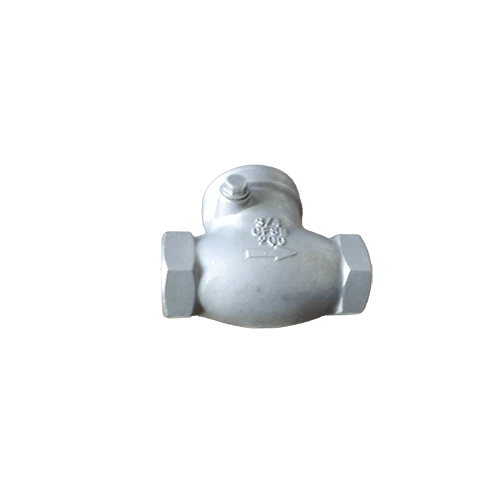Mobile:+86-311-808-126-83
Email:info@ydcastings.com
two stage impeller
The Two-Stage Impeller A Key Component in Modern Fluid Dynamics
In the realm of engineering design, particularly within the fields of fluid mechanics and hydraulic systems, the impeller plays a critical role in enhancing the performance of various machines, from pumps to turbines. Among the various designs available, the two-stage impeller has garnered significant attention for its efficiency and effectiveness in handling a wide range of fluid applications. This article explores the concept of the two-stage impeller, its design features, applications, advantages, and challenges.
Understanding Impellers
An impeller is a rotor that converts rotational energy, commonly from a motor or engine, into energy in a moving fluid. As a fundamental component of centrifugal pumps and compressors, impellers are designed to increase the velocity of the fluid, translating kinetic energy into pressure. The design of an impeller can vary greatly depending on the specific application and required performance characteristics.
The Two-Stage Impeller An Overview
A two-stage impeller consists of two impellers arranged in series, allowing for a greater increase in pressure per unit of fluid. This configuration is particularly beneficial for applications requiring high lift or pressure in a compact design. Each stage of the impeller effectively contributes to the overall energy transfer process, leading to improved fluid dynamics and energy efficiency.
The design of a two-stage impeller generally includes a high-efficiency blade profile, optimized for the intended fluid characteristics such as viscosity and density. By carefully designing the blade angle and geometry, engineers can minimize losses due to turbulence and maximize energy transfer during operation.
Applications of Two-Stage Impellers
Two-stage impellers are utilized across a broad range of industries
. Their applications include1. Water Supply Systems In municipal water supply systems, two-stage impellers are employed in pumps to transport water over long distances or elevate it to significant heights, ensuring adequate pressure for consumers.
2. Wastewater Treatment In wastewater treatment plants, two-stage impellers are used to enhance aeration processes, promoting efficient mixing and oxygen transfer, which is crucial for the degradation of pollutants.
3. Hydraulic Systems Two-stage impellers are vital in hydraulic systems where high pressure is necessary for the operation of machinery. They provide the required force to lift heavy loads or move fluids at controlled rates.
two stage impeller

4. Industrial Processes Many manufacturing processes that involve pumping corrosive or viscous fluids rely on two-stage impeller designs to achieve necessary operational pressures without compromising efficiency.
Advantages of Two-Stage Impellers
The two-stage impeller design offers several distinct advantages
1. Enhanced Efficiency By utilizing two impellers, the energy delivered to the fluid is maximized, leading to higher efficiency in pressure generation.
2. Compact Design Two-stage systems can provide higher pressure lifts without significantly increasing the size of the equipment, making them ideal for installations with space limitations.
3. Versatility Two-stage impellers can handle a wide range of fluids and operating conditions, making them adaptable to various applications across different industries.
4. Reduced Cavitation Risks With improved pressure management, two-stage impellers often experience lower cavitation risks, thereby extending the life of the pumping system and reducing maintenance costs.
Challenges and Considerations
Despite their advantages, the implementation of two-stage impellers also comes with challenges. The complexity of design and manufacturing may increase costs, and the overall system requires careful balancing to prevent issues such as vibration and noise. Moreover, optimizing the design for specific applications often necessitates extensive computational fluid dynamics simulations and testing to ensure peak performance.
Conclusion
The two-stage impeller stands out as an essential component in modern fluid dynamics, showcasing how innovative engineering solutions can significantly enhance performance across various applications. As industries continue to evolve, the demand for efficient, reliable, and high-performance pumping solutions will only increase, further solidifying the role of two-stage impellers in the engineering toolbox. Embracing advancements in materials and design methodologies will undoubtedly lead to even more refined and efficient implementations in the years to come.
-
Understanding Metal Casting TechniquesNewsApr.02,2025
-
Understanding Exhaust Manifolds for Enhanced Engine PerformanceNewsApr.02,2025
-
The World of Metal FabricationNewsApr.02,2025
-
Key Components for Pump and Turbo EfficiencyNewsApr.02,2025
-
Essential Tools for Automotive Maintenance and RepairNewsApr.02,2025
-
Durable Valve Components for Effective Water ManagementNewsApr.02,2025











